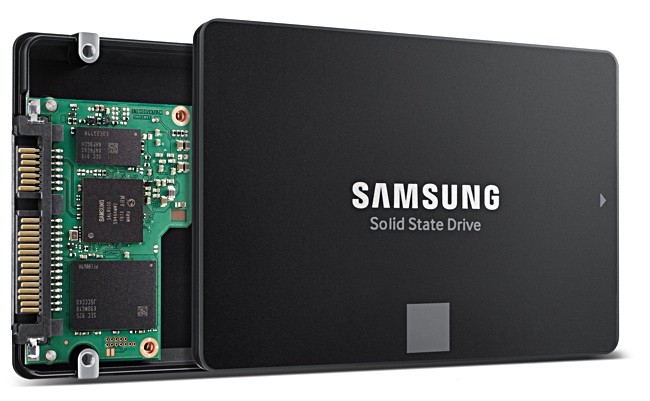Samsung has made a 100+ layer SSD using sixth generation V-NAND technology, although this is not available for sale just yet.
V-NAND is Samsung’s term for its 3D NAND technology and the company currently sells fifth generation 9x layer product i.e. between 90 and 99 layers. The company intends to sell high-speed and high-capacity SSDs made from its sixth generation technology.
V-NAND generations
Here is Samsung’s V-NAND generation layer progression and roadmap:
- V1 – 24 layers July 2013 and 128Gb MLC (2 bits/cell) die August 2013
- V2 – 32-layers August 2014 and 128Gb TLC (3 bits/cell) die
- V3 – 48-layer August 2015 and 256Gb TLC die
- V4 – 64 layers December 2016 and 256Gb TLC die then a 512Gb die
- V5 – 9x layers May 2018 and 256Gb TLC die
- V6 – 1xx layers June 2019 and 256Gb TLC die
- V7 – 2xx layers and 512Gb die
- V8 – 3xx layers from 3 stacks
- V9 – 4xx layers
- V10 – 5xx layers
The sixth generation is a 100+ layer design and the first product is a 250GB SATA III SSD intended for client computing. However, Samsung has not announced product branding, random IOPS, sequential bandwidth or endurance numbers, or availability information.
The company currently sells 850 Pro (32 layers) and 860 Pro (64-layer) client SSDs with a range of capacities, including 256GB. Perhaps we’ll see a 870 Pro based on V6 technology.
256GB V6 V-NAND SATA SSD

Specific details of the 250GB V6 SATA SSD:
- 136 layers of charge trap flash cells
- Single stack design
- 512Gbit die
- TLC (3bits/cell)
- 45μs read latency
- 450μs write latency
- SATA 12Gbit/s interface
Samsung said it produced the 1xx die with 670 million channel holes, compared to 930 million-plus needed for the V5 9x generation. This improved manufacturing productivity by more than 20 per cent. The die is also 10 per cent faster at IO than the 9x product and draws 15 per cent less power.
Layer count transitions
Samsung said it has brought out the V6 1xx layer technology 13 months after introducing V5 9x. This is four months faster than the V4 64-layer to V5 9x layer transition.
Kye Hyun Kyung, EVP of solution product and development at Samsung Electronics, said: “With faster development cycles for next-generation V-NAND products, we plan to rapidly expand the markets for our high-speed,high-capacity 512Gb V-NAND-based solutions.”
That impliesV7 200+ layer technology will debut in September 2020, V8 3xx technology in October 2021, V9 4xx in November 2022, and V10 5xx in December 2023, assuming the 13-month transition time is adhered to.
SK hynix has suggested it will introduce its 500-layer technology in 2025, which would give Samsung a one-to-two year advantage.







